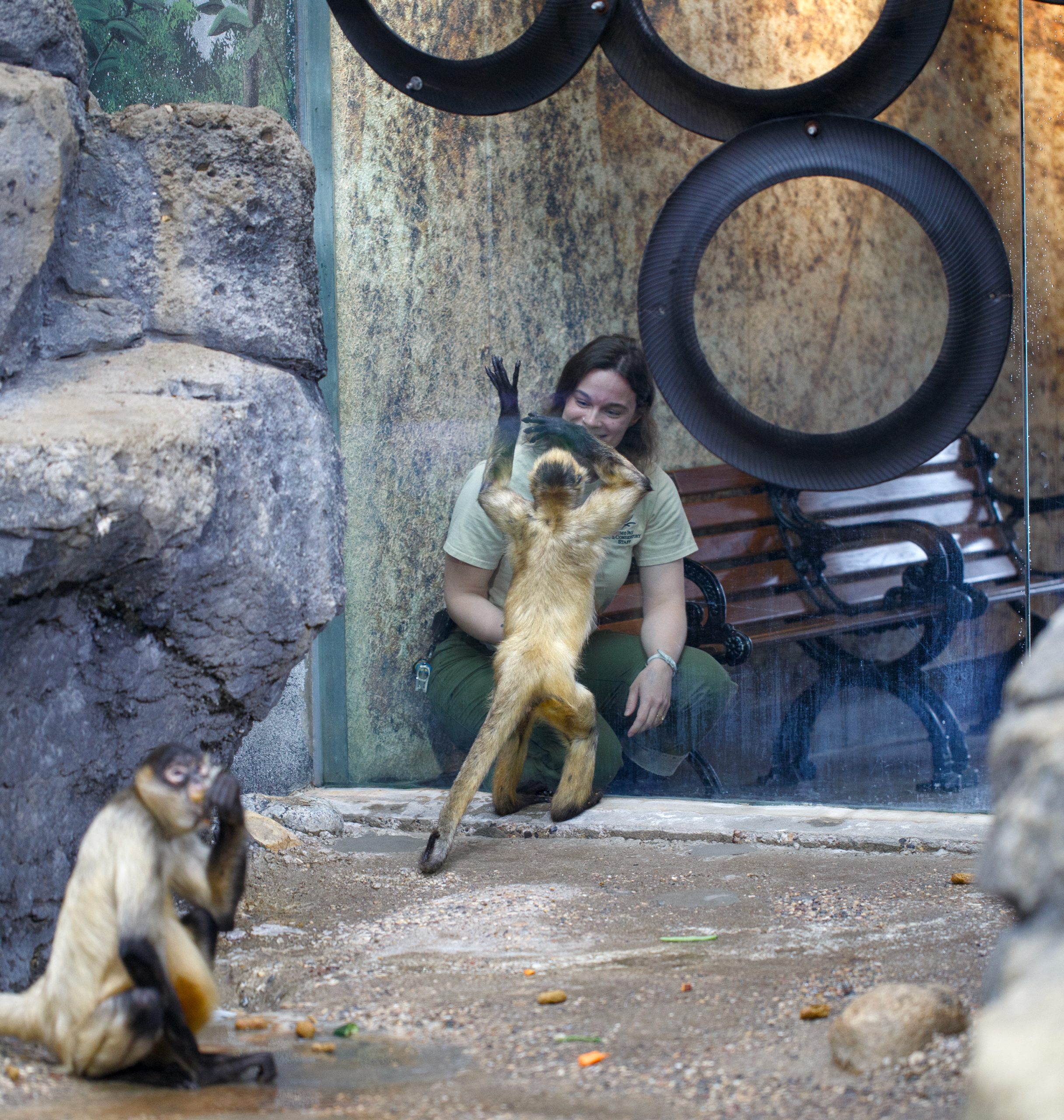As a Conservation Champion, Como Zoo primate keeper Em Brunmeier traveled to Peru to learn more about spider monkeys in the wild


Behind the scenes in Como Zoo’s Primate Building, Brunmeier has become a big fan of the four spider monkeys in her care—Gomez, Katie, Ellie, and Jazz—and she applied to learn more about their cousins in the wild through Conservation Champions, the Como Friends micro-grant program that encourages Como’s keepers and horticulturists to take part in conservation efforts in the field. After researching conservation projects around South America, she decided that the Kawsay Biological Station in Puerto Maldonado, Madre de Dios, Peru was the place to be.
“What was really special about this location was that the team there had been able to bring back and restore a spider monkey population that had been locally extinct, and that was something that I was really excited to be part of, and to see how they were managing that,” she says. “They also work with other scientists in the area, like botanists and PhD students from abroad to research other parts of the ecosystem and how they all correlate with spider monkeys. I really wanted the chance to learn more about how all of these factors come together.”

As part of the project, Brunmeier joined a team of researchers tracking spider monkeys that had been previously released into the Tambopata National Reserve to study the seasonal variation of their behavior. “With no GPS collars or other tracking devices, it was quite a task,” she says. “We had no guarantee we would find them and had to go pretty far into the Amazon rainforest.” But once the spider monkeys were located, Brunmeier got the chance to hear the full chorus of their vocalizations. “For spider monkeys in the wild, their home range is nearly 700 acres, and they often split up their group and then reunite at night to sleep together,” she says. “To do all of that requires quite a lot of logistics, so they’ve come up with quite a lot of vocalizations. They have little chirping sounds that they make when they’re close to each other, and really loud, bellowing calls that they use to try and find each other over long distances. It was so fun listening to them—they have lots of things to say.”
During her two and a half weeks in the field, Brunmeier also got the chance to care for young spider monkeys in a rehabilitation facility. “That’s where my personal expertise came in handy, because hands-on care of the animals is what I do every day,” she says. “I was also able to talk with the team about how we do primate enrichment at AZA [Association of Zoos and Aquariums] institutions in the U.S., which is something I’m passionate about.”

Now back at Como Zoo, Brunmeier says her trip to Peru has brought new insights to her work with spider monkeys, and new ideas for ongoing animal enrichment to the conservation work at Kawsay Biological Station. “What’s cool about the Conservation Champions trips is that it’s a two-way street,” she says. “We get the chance to learn about the animals we care about in the wild, and because we know our animals at Como Zoo so well, we also have important things to share with our conservation partners.”
Our Conservation Champions Program would not be possible without your support. Thank you!







